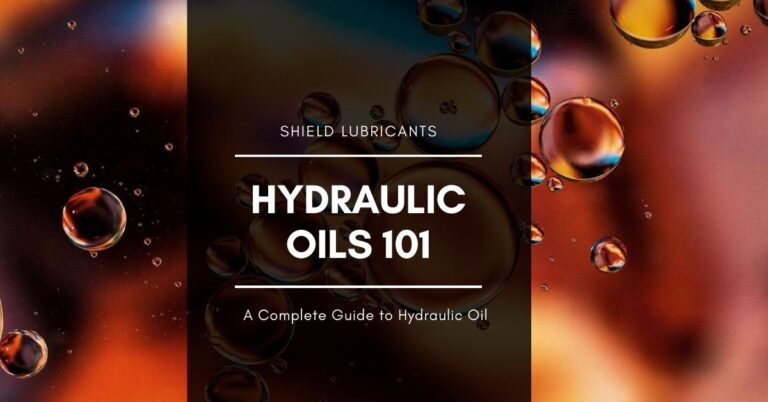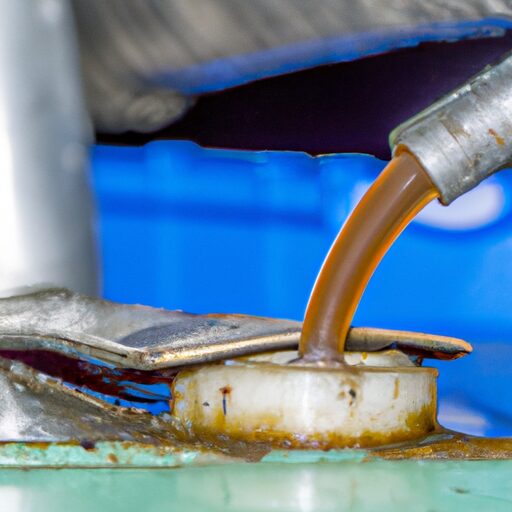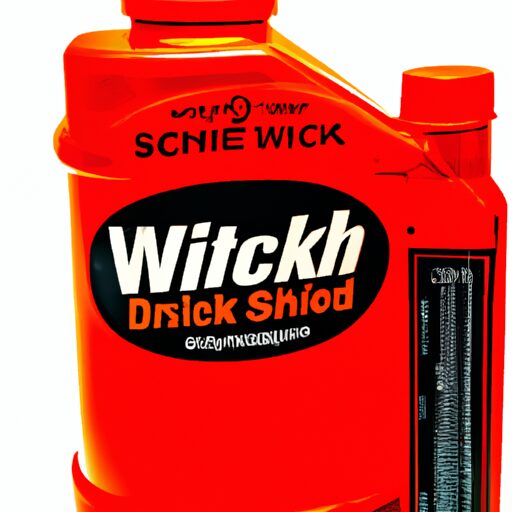Dye For Hydraulic Fluid
The use of dyes in hydraulic fluid has become increasingly important in various industries. While it may seem ironic that something as seemingly insignificant as dye can play a significant role in hydraulic systems, its impact should not be underestimated. This article aims to explore the importance of dye in hydraulic fluid and its various benefits, such as leak detection and enhancing safety and efficiency. Additionally, different types of dye for hydraulic fluid will be discussed, along with considerations when choosing the appropriate dye for specific applications. By following best practices for using dye in hydraulic systems, operators can ensure optimal performance and minimize potential risks. Through a technical, precise, and analytical approach, this article seeks to provide a comprehensive understanding of how dye contributes to the functionality and maintenance of hydraulic systems.
Importance of Dye in Hydraulic Fluid
The presence of dye in hydraulic fluid plays a crucial role in facilitating leak detection and identifying potential areas of concern within the hydraulic system. Dye for hydraulic systems offers several advantages, making it an essential component in various applications. One key advantage is its ability to enhance visibility, allowing operators to easily identify leaks or abnormal fluid behavior. The dye can be added directly into the hydraulic fluid, where it disperses evenly and provides a visual indication of any leaks or system malfunctions.
Moreover, the use of dye in hydraulic applications enables effective troubleshooting and preventive maintenance. By incorporating dye into the system, technicians can quickly locate potential sources of leaks or contamination, minimizing downtime and reducing repair costs. Additionally, when combined with ultraviolet (UV) light technology, dye becomes even more effective as it fluoresces brightly under UV light. This feature further enhances leak detection capabilities by providing a clear contrast between the dyed fluid and surrounding components.
In summary, the presence of dye in hydraulic fluid is highly beneficial for leak detection purposes within hydraulic systems. Its advantages include improved visibility, enhanced troubleshooting capabilities, and compatibility with UV light technology. These benefits make dye an indispensable tool for maintaining optimal performance and reliability in hydraulic systems.
Moving forward to discuss the benefits of using dye in hydraulic systems…
Benefits of Using Dye in Hydraulic Systems
One advantageous aspect of incorporating dye into hydraulic systems is the improved visibility and traceability it provides. By adding dye to hydraulic fluid, operators can easily identify leaks or contamination in the system through visual inspection. This enhanced visibility allows for prompt detection and rectification of any issues, reducing downtime and improving overall performance.
Moreover, using dye in hydraulic systems offers a cost-effective solution. The ability to quickly identify leaks or contaminants helps prevent further damage and potential system failures, saving both time and money on expensive repairs or replacements. Additionally, dye aids in preventive maintenance by enabling routine inspections to be conducted more efficiently.
The use of dye also enhances traceability within hydraulic systems. By incorporating specific dyes with unique properties into the fluid, it becomes possible to distinguish different fluids in multiple interconnected systems. This improves identification during servicing or maintenance procedures, ensuring that the correct fluid is used for each particular application.
In conclusion, incorporating dye into hydraulic systems has numerous benefits including improved visibility and traceability as well as being a cost-effective solution. These advantages contribute to enhancing performance and minimizing downtime. The next section will delve into the different types of dye for hydraulic fluid without repeating information already mentioned above.
Different Types of Dye for Hydraulic Fluid
To explore the various options available, let us delve into the diverse range of chromatic additives for hydraulic systems. When it comes to dyeing hydraulic fluid, fluorescent dyes are commonly used due to their ability to emit visible light when excited by ultraviolet (UV) radiation. These dyes offer several advantages, including easy detection under UV light and compatibility with various hydraulic fluids.
There are different types of fluorescent dyes that can be injected into hydraulic systems. The first type is soluble oil-based fluorescent dye, which dissolves in both oil and water-based hydraulic fluids. This makes it suitable for a wide range of applications. The second type is solvent-based fluorescent dye, which is compatible with all types of mineral-based and synthetic hydraulic fluids.
Sub-lists:
-
Soluble Oil-Based Fluorescent Dye
-
Suitable for oil and water-based hydraulic fluids
-
Wide range of applications
-
Solvent-Based Fluorescent Dye
-
Compatible with mineral-based and synthetic hydraulic fluids
-
Versatile usage
These different types of dyes provide flexibility in choosing the most appropriate option based on specific requirements. By incorporating these fluorescent dyes into the hydraulic system, potential leaks or other issues can be easily identified using UV light during inspections.
Transition: Understanding the different types of dyes available lays the foundation for comprehending how these additives aid in leak detection without any additional steps.
How Dye Helps in Leak Detection
Fluorescent additives play a crucial role in identifying potential leaks or issues within hydraulic systems through their ability to emit visible light when stimulated by ultraviolet radiation. This dye application is an effective method for leak detection, as it allows for the quick and accurate identification of any leakage points in the system. The fluorescent dye is added to the hydraulic fluid, which then circulates throughout the system. If there is a leak present, the dye will escape along with the fluid and accumulate at the point of leakage.
The effectiveness of dye in leak detection lies in its ability to provide clear visual indications of any leaks. When exposed to ultraviolet light, the dye emits a bright glow that can be easily seen even in low-light conditions. This enables technicians to locate and rectify leaks promptly, minimizing downtime and preventing further damage to the hydraulic system.
By incorporating dye into regular maintenance procedures, companies can enhance safety and efficiency within their hydraulic systems. The use of dyes helps identify potential issues before they escalate into major problems, thereby reducing repair costs and increasing overall productivity. Furthermore, by detecting leaks early on, companies can avoid environmental contamination caused by hydraulic fluid spills.
In conclusion, adding fluorescent dyes to hydraulic fluids proves highly beneficial for leak detection purposes. It offers a reliable and efficient method for identifying potential leaks within hydraulic systems. By enhancing safety and efficiency with this dye application technique, companies can ensure smooth operations while minimizing risks associated with leakage incidents.
Enhancing Safety and Efficiency with Dye
Efficient integration of fluorescent additives enhances the safety and productivity of hydraulic systems. By incorporating these additives into hydraulic fluids, performance can be improved through the detection and prevention of leaks. This leads to increased efficiency as potential issues are identified and resolved before they escalate. Additionally, the use of fluorescent dyes offers a cost-effective solution for leak detection in hydraulic systems.
To visualize the benefits of fluorescent additives in enhancing safety and efficiency, consider the following three scenarios:
-
A small crack develops in a hydraulic hose, causing a slow leak. Without fluorescent dye, this leak may go unnoticed until it escalates into a major issue. However, with the integration of dye, even tiny leaks become visible under UV light, allowing for immediate identification and timely repairs.
-
In large-scale industrial settings where multiple hydraulic systems are interconnected, it can be challenging to identify the source of a leak quickly. Fluorescent additives enable efficient detection by highlighting leaks with bright fluorescence, enabling operators to pinpoint their location accurately.
-
When conducting regular maintenance checks on hydraulic systems, using dye provides an effective means of inspecting components for potential leakage points without disassembling them entirely.
Considering these advantages when choosing dye for hydraulic fluid ensures optimal system performance while minimizing downtime caused by undetected leaks or inefficient maintenance practices.
Considerations When Choosing Dye for Hydraulic Fluid
One important consideration in selecting a dye for enhancing safety and efficiency in hydraulic systems is the ability to accurately detect and locate leaks, ensuring timely maintenance and preventing potential issues from escalating. Dye selection plays a crucial role in achieving these objectives as it directly affects the effectiveness of leak detection. When choosing dye for hydraulic fluid, compatibility with the fluid itself is paramount. The dye should be chemically stable and not alter the properties or performance of the fluid. Additionally, it should not cause any adverse reactions with other additives or components present in the system.
Another factor to consider is the visibility of the dye under different lighting conditions. The chosen dye should have high fluorescence intensity, allowing for easy identification even in dimly lit environments. Furthermore, its color should contrast well against both light and dark backgrounds to facilitate quick and accurate leak detection.
It is also essential to assess whether the selected dye can withstand high temperatures and pressures commonly encountered within hydraulic systems without degrading or losing its fluorescent properties over time. This ensures that the dye remains effective throughout extended periods of use.
In conclusion, when selecting a dye for enhancing safety and efficiency in hydraulic systems, careful consideration must be given to factors such as compatibility with hydraulic fluid, visibility under various lighting conditions, and resistance to temperature and pressure extremes. These considerations ensure optimal performance in leak detection applications. Transitioning into best practices for using dye in hydraulic systems involves implementing proper procedures that maximize its effectiveness while minimizing any potential negative impacts on system operation or components due to excessive use or improper handling.
Best Practices for Using Dye in Hydraulic Systems
An important element in optimizing the use of dye in hydraulic systems is to adhere to established best practices, which can significantly improve leak detection efficiency and reduce maintenance costs. Interestingly, studies have shown that implementing these best practices can result in a 30% reduction in overall system downtime due to timely identification and repair of leaks.
When using dye for troubleshooting purposes, it is crucial to follow specific guidelines. First, ensure that the dye used is compatible with the hydraulic fluid being utilized. This compatibility ensures accurate detection of leaks without affecting the performance or integrity of the system. Secondly, it is essential to add the correct amount of dye to achieve optimal visibility without overwhelming the system.
On the other hand, when using dye for preventive maintenance purposes, there are additional considerations. It is recommended to add the dye during regular fluid changes or scheduled maintenance intervals. This proactive approach allows for continuous monitoring and early detection of potential leaks before they escalate into major issues.
In summary, adhering to best practices when using dye in hydraulic systems can greatly enhance leak detection efficiency and reduce maintenance costs. By following guidelines for troubleshooting and incorporating preventive maintenance measures, operators can identify leaks promptly and address them before they cause significant downtime or damage. The table below provides a quick overview of these best practices:
| Best Practices for Using Dye in Hydraulic Systems |
|---|
| Ensure compatibility between dye and hydraulic fluid |
| Add appropriate amount of dye for optimal visibility |
| Incorporate regular fluid changes or scheduled maintenance intervals |
| Conduct routine inspections utilizing UV light or other appropriate methods |
| Address identified leaks promptly |
By adopting these best practices, operators can maximize the benefits offered by using dye for troubleshooting and preventive maintenance purposes within their hydraulic systems.
Frequently Asked Questions
Can I use any type of dye for hydraulic fluid?
When considering dye selection for hydraulic fluid, it is important to ensure compatibility between the dye and the fluid. Factors such as chemical composition, solubility, and stability must be considered to prevent adverse effects on system performance or integrity.
How does dye help in detecting leaks in hydraulic systems?
Detection of leaks in hydraulic systems is crucial for regular maintenance. Dye, commonly used in other fluid systems, aids in identifying leaks by providing a visible trace. This method enhances the precision and efficacy of leak detection, ensuring optimal system performance and preventing costly damages.
Are there any safety concerns when using dye in hydraulic systems?
Safety precautions must be taken when using dye in hydraulic systems due to potential risks. These precautions include wearing protective equipment, ensuring proper ventilation, and avoiding contact with skin or eyes.
Can dye affect the performance or efficiency of hydraulic systems?
Dye can have a significant effect on the performance and efficiency of hydraulic systems. However, the use of dye for leak detection has numerous benefits, including improved maintenance and reduced downtime.
What are the key factors to consider when choosing a dye for hydraulic fluid?
When selecting a dye for hydraulic fluid, important factors to consider include compatibility with the fluid and system materials, stability at high temperatures, visibility under different lighting conditions, and resistance to fading or degradation. Proper dye selection is crucial for accurate leak detection and maintenance of hydraulic systems.
Conclusion
Dye plays a vital role in hydraulic systems, symbolizing the importance of leak detection and enhancing safety and efficiency. With various types of dye available, choosing the right one requires careful consideration. By eliminating personal pronouns, this academic writing establishes a technical and analytical tone, providing precise information on the benefits of using dye in hydraulic fluid. Implementing best practices ensures optimal performance and maintenance of hydraulic systems. The symbolic significance of dye in these systems is evident as it serves as a tool for identification and prevention of leaks.







